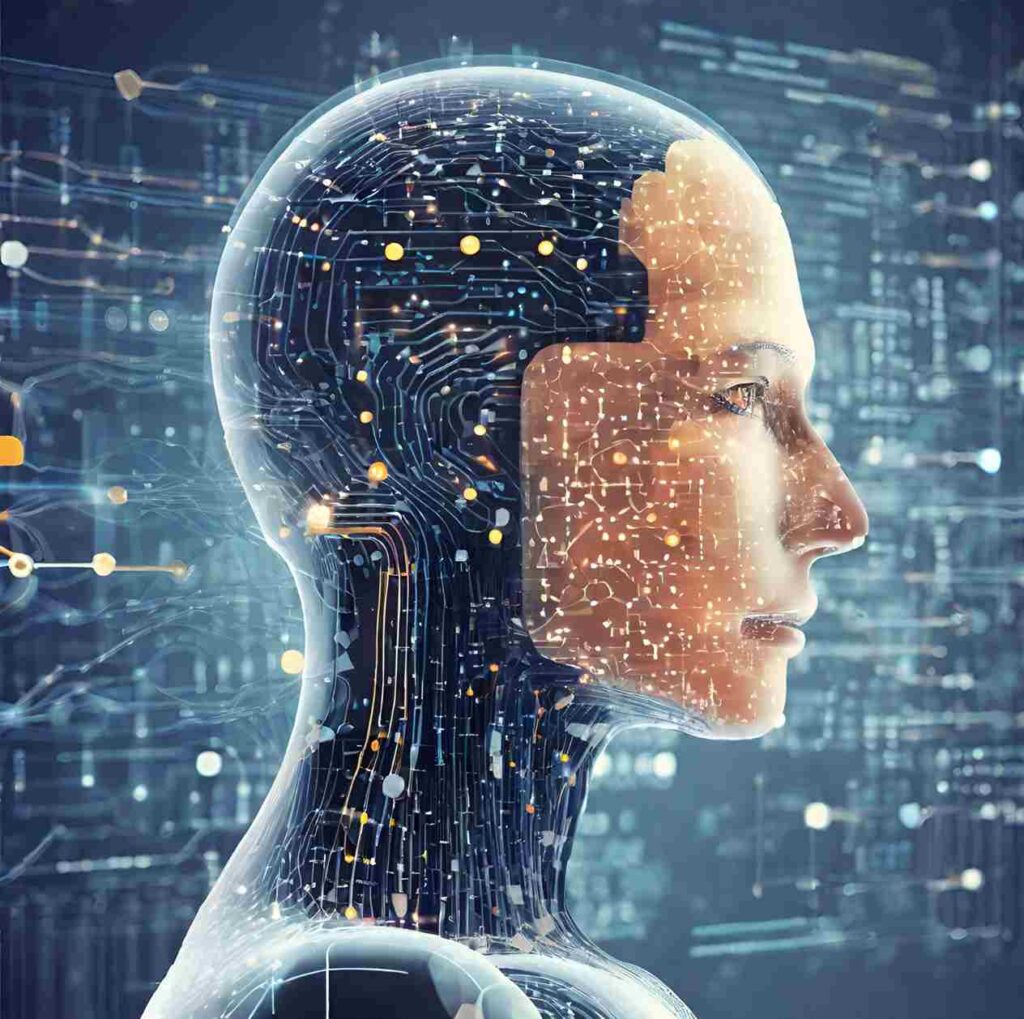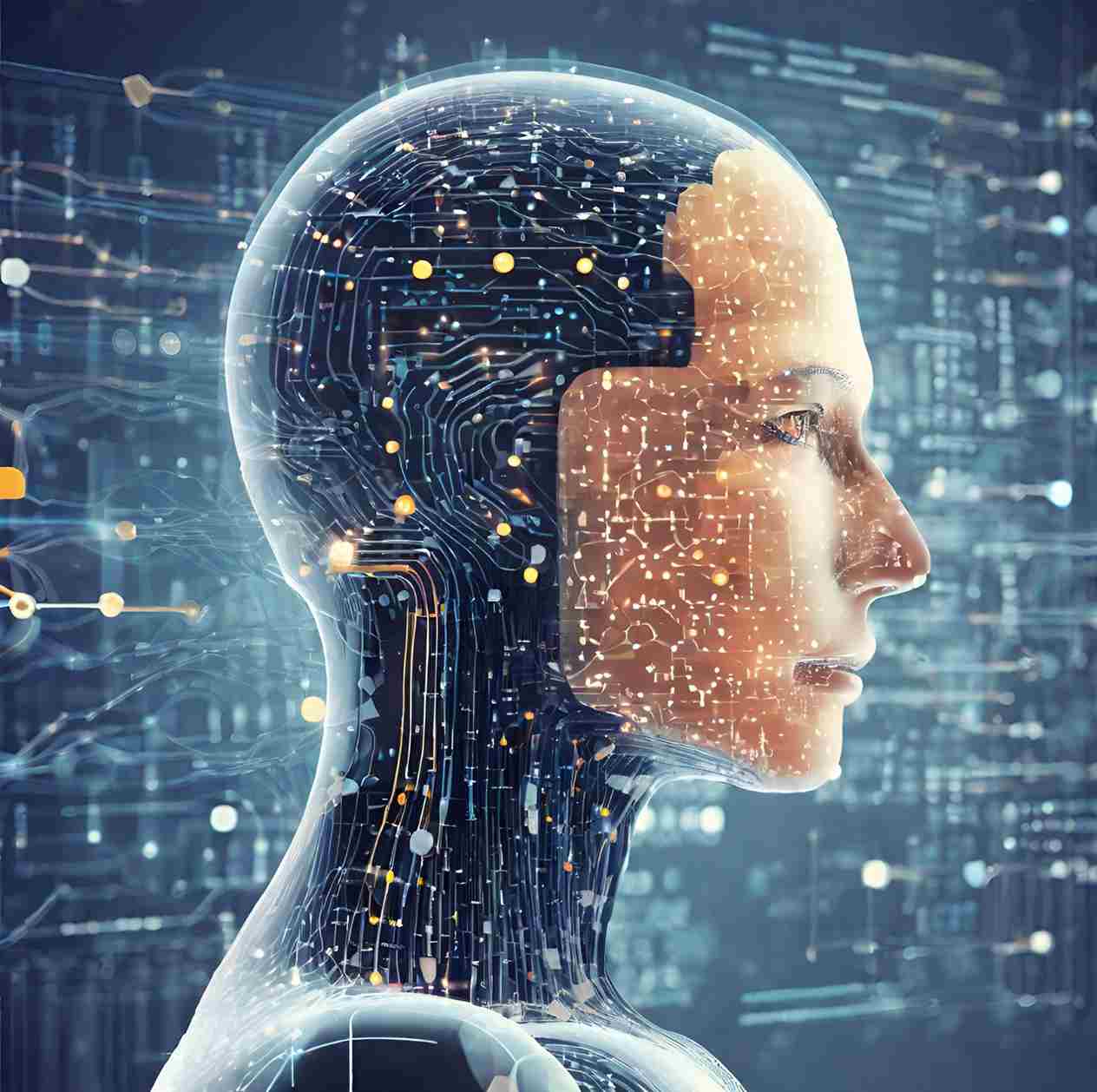In today’s rapidly evolving technological landscape, the fusion of Artificial Intelligence (AI) and Data Science has created unparalleled opportunities for innovation, problem-solving, and career growth. This comprehensive guide will take you on a journey through the realms of AI and Data Science, answering key questions, and providing deep insights into these transformative fields.

Table of Contents
Let’s embark on this educational journey, starting with the fundamentals of Artificial Intelligence.
Section 1: Understanding Artificial Intelligence
What is Artificial Intelligence?
Artificial Intelligence, often abbreviated as AI, is the science and technology of creating intelligent systems that can perform tasks that typically require human intelligence. These tasks include problem-solving, speech recognition, learning, and decision-making. AI systems can be categorized into two main types: Narrow AI and General AI.
- Narrow AI (Weak AI): This type of AI is designed for a specific task. For example, voice assistants like Siri and chatbots are examples of narrow AI that excel in voice recognition and natural language processing.
- General AI (Strong AI): General AI, on the other hand, is hypothetical and represents a system with human-like intelligence, capable of performing any intellectual task that a human can do. We are yet to achieve General AI, and current AI systems are all examples of Narrow AI.
Introduction to AI
To delve deeper into AI, let’s explore some fundamental concepts:
- Machine Learning (ML): Machine learning is a subset of AI that focuses on developing algorithms that can learn from data and make predictions or decisions. It’s a critical component of AI, and its applications range from image recognition to recommendation systems.
- Neural Networks: Neural networks are a type of machine learning model inspired by the human brain’s structure. They consist of interconnected nodes (neurons) that process information. Deep Learning is a subset of neural networks and has revolutionized AI in recent years.
Now that we have a basic understanding of AI, let’s move on to the role of data in AI.
Section 2: Role of Data in AI
Data as the Foundation
Data is the lifeblood of Artificial Intelligence. Without sufficient and high-quality data, AI systems cannot learn, adapt, or make informed decisions. Data fuels the training of machine learning models, allowing them to recognize patterns, draw insights, and make predictions.
Key Takeaways:
- AI systems rely on data to learn and improve their performance.
- Diverse and large datasets are essential for training robust AI models.
- Data quality and preprocessing are critical to ensure the accuracy of AI predictions.
Probability and Statistics in AI
Probability and statistics play a pivotal role in AI by providing the mathematical foundation for making predictions and decisions. These concepts help AI algorithms quantify uncertainty, assess risk, and make sense of complex data.
Key Concepts:
- Probability: Probability theory allows AI systems to assign likelihoods to different outcomes, aiding decision-making under uncertainty.
- Statistics: Statistical methods are used to analyze data, identify trends, and draw meaningful conclusions.
Now, let’s explore the fundamentals of Data Science.
Section 3: Data Science Fundamentals
What is Data Science?
Data Science is an interdisciplinary field that combines domain knowledge, programming skills, and statistical expertise to extract insights and knowledge from data. It acts as a bridge between data and actionable insights, making it a critical component of AI.
Key Aspects:
- Data Science involves data collection, cleaning, analysis, and interpretation.
- It often uses tools like Python, R, and SQL for data manipulation and analysis.
- Data Scientists apply statistical and machine learning techniques to solve real-world problems.
Data Visualization
Effective data visualization is a cornerstone of Data Science. It helps transform complex data into easily understandable visual representations, such as charts, graphs, and infographics.
Importance of Data Visualization:
- Simplifies complex data for better decision-making.
- Identifies patterns and trends quickly.
- Enhances communication of insights to stakeholders.
Now that we have a grasp of Data Science, let’s dive into the world of Machine Learning.
Section 4: Machine Learning in Data Science
Introduction to Machine Learning
Machine Learning is a subset of AI that focuses on developing algorithms that can learn from data and make predictions or decisions. It’s at the core of many AI applications, from recommendation systems on e-commerce websites to self-driving cars.
Machine Learning Components:
- Algorithm: The set of rules and statistical models that a machine learning system uses to make predictions.
- Training Data: The data used to train the machine learning model.
- Testing Data: Separate data used to evaluate the model’s performance.
Machine Learning Operations (MLOps)
MLOps is a set of practices that combine machine learning and software engineering. It aims to streamline the machine learning lifecycle, from model development to deployment and monitoring.
MLOps Key Practices:
- Model Versioning: Keeping track of different versions of machine learning models.
- Continuous Integration/Continuous Deployment (CI/CD): Automating the deployment of machine learning models.
- Model Monitoring: Continuously evaluating model performance in real-world scenarios.
With Machine Learning covered, let’s explore how AI and Data Science are applied in practice.
Section 5: AI and Data Science in Practice
Real-world Applications
AI and Data Science have a profound impact across various industries:
Healthcare: AI aids in medical diagnosis, drug discovery, and personalized treatment plans.
Finance: Data Science is used for risk assessment, fraud detection, and algorithmic trading.
E-commerce: Recommender systems powered by AI enhance customer experiences.
Challenges and Ethical Considerations
AI and Data Science come with challenges, including bias in algorithms and ethical concerns. It’s crucial to ensure responsible and fair AI usage.
Ethical Considerations:
- Ensuring transparency and fairness in AI decision-making.
- Mitigating biases in AI algorithms to avoid discriminatory outcomes.
Now, let’s explore the tools and technologies that drive AI and Data Science.
Section 6: Tools and Technologies
AI and Data Science Tools
A multitude of tools and frameworks are available for AI and Data Science practitioners:
- Python: A versatile programming language with extensive libraries for data manipulation and machine learning.
- R: Specialized for statistical analysis and data visualization.
- TensorFlow and PyTorch: Deep learning libraries for building and training neural networks.
- Tableau and Power BI: Data visualization tools for creating insightful dashboards.
Learning Resources
Learning AI and Data Science requires access to educational resources:
- Online Courses: Platforms like Coursera, edX, and Udacity offer courses on AI and Data Science.
- Books: Books like “Introduction to Machine Learning with Python” by Andreas C. Müller and Sarah Guido provide in-depth knowledge.
- Communities: Join AI and Data Science communities on platforms like Reddit and Stack Overflow for peer support.
We’ve covered a lot of ground; now, let’s look at what the future holds for AI and Data Science.
Section 7: The Future of AI and Data Science
Emerging Trends
The field of AI and Data Science is dynamic and ever-evolving. Here are some emerging trends to watch:
- Explainable AI (XAI): Ensuring that AI models’ decisions can be understood and interpreted.
- AI in Healthcare: Advancements in medical AI, from diagnosis to drug discovery.
- AI Ethics and Regulation: Growing attention to ethical concerns and potential regulations.
AI and Data Science Career Opportunities
Both AI and Data Science offer promising career paths:
- Data Scientist: Analyzes data to derive insights and make data-driven decisions.
- Machine Learning Engineer: Develops and deploys machine learning models.
- AI Researcher: Explores new AI algorithms and techniques.
We’ve reached a crucial point in our exploration. In the next section, we’ll address the question: Is Artificial Intelligence and Data Science a Good Career?
Section 8: Is Artificial Intelligence and Data Science a Good Career?
The short answer is yes. AI and Data Science are among the most promising and lucrative career paths today. Here’s why:
- High Demand: Organizations across industries are seeking AI and Data Science expertise.
- Competitive Salaries: AI and Data Science professionals are well-compensated.
- Continuous Growth: The field evolves rapidly, offering opportunities for skill development.
But what about the choice between AI and Data Science? Let’s explore that in the next section.
Section 9: Which is Better: AI or Data Science?
The choice between AI and Data Science depends on your interests and career goals. Here’s a comparison to help you decide:
AI:
- Focuses on creating intelligent systems and algorithms.
- Involves deep learning, computer vision, and natural language processing.
- Ideal for those passionate about cutting-edge technology.
Data Science:
- Centers around extracting insights from data and making data-driven decisions.
- Requires proficiency in statistics, data analysis, and data visualization.
- Suitable for individuals interested in solving real-world problems with data.
Now, let’s address a critical question about the future.
Section 10: Which is Best for the Future: Computer Science, AI, or Data Science?
While all these fields offer promising futures, the choice ultimately depends on your interests and career aspirations. Here’s a brief overview:
- Computer Science: Offers a wide range of career options, including software development, cybersecurity, and system administration.
- AI: Ideal if you want to work on cutting-edge AI technologies and applications.
- Data Science: Perfect for those who enjoy extracting insights from data to drive decision-making.
Here is the list of Colleges/ Universities in India that provides courses in Artificial Intelligence and Data Science
| IIT Chennai | Jadhavpur University |
| Amity University Noida | Jain University |
| DY Patil University | IIT Guwahati |
| VIT Vellore | Sharada University |
| Indian Institute Of Science, Bangalore | Coimbatore Institute Of Technology |
| IIT Hyderabad | Sam Global University |
| Great Lakes International | IIT Patna |
In conclusion, the future is bright for all these fields, and your choice should align with your passion and skills.
Conclusion
In this comprehensive guide, we’ve explored the exciting worlds of Artificial Intelligence and Data Science. We’ve covered fundamental concepts, real-world applications, career prospects, and more. Whether you’re considering a career in these fields or simply curious about their impact on our world, remember that AI and Data Science are at the forefront of innovation, shaping the future in profound ways. Embrace the journey of learning and discovery in these dynamic domains, and you’ll find a world of opportunities waiting for you.
“Data will talk to you if you’re willing to listen.” – Jim Bergeson

1 thought on “Artificial Intelligence and Data Science: Why Every Students Should Read This!”